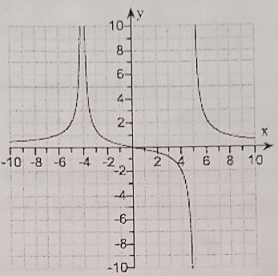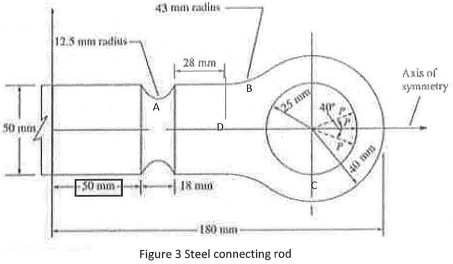Reference no: EM131130140
Calculus Assignment - Title: Problem Solving- Infinite Limits and Derivatives
1. Use the graph of the function to determine the limit limx→3f(x), if exists.

2. The graph of shown below has vertical asymptotes at x = -4 and x = 5. Find the following. Use ∞ or -∞ when appropriate.
a. limx→-4^- f(x)
b. limx→4^+ f(x)
c. limx→-4 f(x)
d. limx→5^- f(x)
e. limx→5^+ f(x)
f. limx→5 f(x)

3. Find the limit.
limx→4^+ 4/x-4
4. Evaluate the limit, using ∞ or -∞ when appropriate, or state that it does not exist.
limx→1(5x2-5/x-1)
5. Find all vertical asymptotes, x = a, of the function f(x) = (x3-9x2+14x/x2-7x). For each value of a evaluate limx→a^+ f(x), limx→a^-f(x), and limx→a f(x). Use ∞ or -∞ when appropriate.
6. Find all limit of the rational function h(x) = (16x3/13x3+15x2+11x) when:
a. X → ∞
b. X → -∞
7. Evaluate limx→∞f(x) and limx→-∞f(x) for the function f(x) = (x3+8/4x3+√(64x6+4)). Use ∞ or -∞ where appropriate. Then give the horizontal asymptote(s) of f (if any).
8. If a function f represents a system that varies in time, the existence of limt→∞f(t) means that the system reaches a steady state (or equilibrium). For the system of the population of a culture of tumor cells given by p(t) = 3400t/t+2, determine if a state exists and give the steady-state value.
9. What is the domain of f(x) = √(1-x2) and where is f continuous?
10. State whether the indicated function is continuous at 4.

11. Suppose f(x) is defined as shown below.
a. Use the continuity checklist to show that f is not continuous at 0.
b. Is f continuous from the left or right at 0?
c. State the interval(s) of continuity.

12. Determine the interval(s) on which the following function is continuous. Be sure to consider right-and left-continuity at the endpoints.
f(x) = √(3x2 - 24)
13. Evaluate the following limit.
limx→3π/2(sin2 x + 5 sin x + 4/sin x + 1)
14. Use the Intermediate Value Theorem to verify that the following equation has three solutions on the interval (0, 1). Use a graphing utility to find the approximate roots.
140x3 - 139x2 + 38x - 3 = 0.